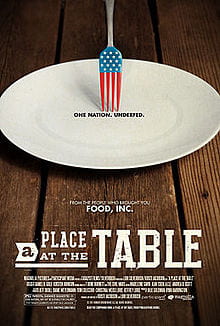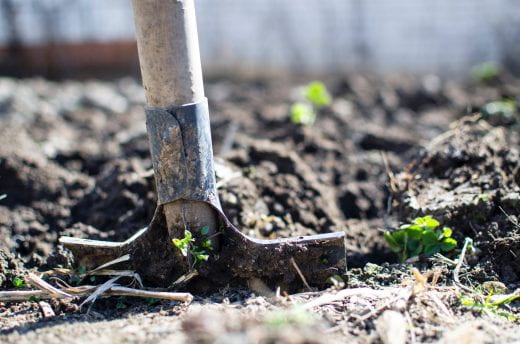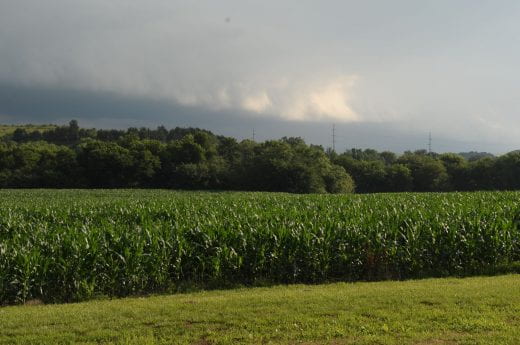Welcome to Better Kansas, where every Thursday we shed light on events, resources and other information designed to make your life, businesses, communities and state better. Share on social media and don’t forget to subscribe! – Mary Lou Peter mlpeter@ksu.edu
Better Living, Better Communities
 OCCASIONALLY I WRITE ABOUT WHAT RURAL COMMUNITIES ARE DOING to stay vibrant, so a recent study of the economic impact of Brown County’s healthcare system caught my attention. The study, by the Extension Office of Local Government (OLG), is part of the Kansas Rural Health Works program initiative sponsored by the Kansas Hospital Association. It turns out that the Brown Co. study is just one that the OLG has conducted in each of Kansas’ 105 counties. Think about it … and research backs this up: local health care and education are two primary factors in economic development in any community. In the case of Brown County, the health care sector in 2018 accounted for an estimated 10.2% of Brown County’s total employment, or about 725 jobs. After accounting for economic multipliers for 13 health care sectors, the study’s authors estimated the sectors accounted for more than $46,286,000 in total county income and about $9,828,000 in county retail sales. Read an article in the Hiawatha World newspaper or contact John Leatherman at the OLG at jleather@ksu.edu or 785-532-4492 for more information.
OCCASIONALLY I WRITE ABOUT WHAT RURAL COMMUNITIES ARE DOING to stay vibrant, so a recent study of the economic impact of Brown County’s healthcare system caught my attention. The study, by the Extension Office of Local Government (OLG), is part of the Kansas Rural Health Works program initiative sponsored by the Kansas Hospital Association. It turns out that the Brown Co. study is just one that the OLG has conducted in each of Kansas’ 105 counties. Think about it … and research backs this up: local health care and education are two primary factors in economic development in any community. In the case of Brown County, the health care sector in 2018 accounted for an estimated 10.2% of Brown County’s total employment, or about 725 jobs. After accounting for economic multipliers for 13 health care sectors, the study’s authors estimated the sectors accounted for more than $46,286,000 in total county income and about $9,828,000 in county retail sales. Read an article in the Hiawatha World newspaper or contact John Leatherman at the OLG at jleather@ksu.edu or 785-532-4492 for more information.
 WE SOMETIMES TAKE FOOD and what it takes to grow it, for granted. If you’re anywhere near the Kansas City area and interested in thought-provoking (and free 🙂 films, check out the Food for Thought Film Series the second Tuesday of every month, hosted by the Urban Food Systems program at K-State Olathe. Next up on Nov. 14 is “A Place at the Table” about three Americans who maintain their dignity even as they struggle to eat. On Dec. 12, “Biggest Little Farm” chronicles the eight-year quest of a family who trades city living for farmland and a dream to harvest in harmony with nature. Each film is followed by a panel discussion of experts on the night’s theme, plus an opportunity for audience questions.
WE SOMETIMES TAKE FOOD and what it takes to grow it, for granted. If you’re anywhere near the Kansas City area and interested in thought-provoking (and free 🙂 films, check out the Food for Thought Film Series the second Tuesday of every month, hosted by the Urban Food Systems program at K-State Olathe. Next up on Nov. 14 is “A Place at the Table” about three Americans who maintain their dignity even as they struggle to eat. On Dec. 12, “Biggest Little Farm” chronicles the eight-year quest of a family who trades city living for farmland and a dream to harvest in harmony with nature. Each film is followed by a panel discussion of experts on the night’s theme, plus an opportunity for audience questions.
 THE ANSWER PEOPLE: In my communications role I often see questions emailed from an extension agent to their colleagues across the state. It might be that someone in their county is looking for help identifying a certain weed in their lawn or farm fields. Or looking for resources as they prepare to do a program for teens on financial literacy. Honestly, a lot of interesting topics come up. Before I know it, responses with offers of help and resources are popping up. It’s a cool thing about cooperative extension. K-State Research and Extension educators in every county specialize in finding answers to questions for Kansans. If they don’t have an answer, they’ll do their best to track down the best information. If you’re not familiar with your extension office, now’s a good time to take a look.
THE ANSWER PEOPLE: In my communications role I often see questions emailed from an extension agent to their colleagues across the state. It might be that someone in their county is looking for help identifying a certain weed in their lawn or farm fields. Or looking for resources as they prepare to do a program for teens on financial literacy. Honestly, a lot of interesting topics come up. Before I know it, responses with offers of help and resources are popping up. It’s a cool thing about cooperative extension. K-State Research and Extension educators in every county specialize in finding answers to questions for Kansans. If they don’t have an answer, they’ll do their best to track down the best information. If you’re not familiar with your extension office, now’s a good time to take a look.
Better Farming, Ranching and Gardening
 TURN SOME OF THOSE PLENTIFUL LEAVES COMING OFF THE TREES plus lawn clippings, dead tomato vines and other organic waste into a valuable top dressing or addition to your vegetable and flower garden soil by composting it. If the thought seems daunting, the short four-page Making Compost: A Beginner’s Guide takes you step by step through the how’s and why’s of getting started, with illustrations, benefits and cautions, plus additional resources. It’s a win-win … and win some more. It keeps the material out of landfills and once that material is composted and added to your garden or planting beds, can make the soil looser and easier to work with (especially helpful in some of our heavy clay soils); provides nutrients and even can be used as a top dressing for seeded vegetables and flowers. If you don’t want to do it on your own, start a neighborhood compost pile where several contribute and reap the benefits.
TURN SOME OF THOSE PLENTIFUL LEAVES COMING OFF THE TREES plus lawn clippings, dead tomato vines and other organic waste into a valuable top dressing or addition to your vegetable and flower garden soil by composting it. If the thought seems daunting, the short four-page Making Compost: A Beginner’s Guide takes you step by step through the how’s and why’s of getting started, with illustrations, benefits and cautions, plus additional resources. It’s a win-win … and win some more. It keeps the material out of landfills and once that material is composted and added to your garden or planting beds, can make the soil looser and easier to work with (especially helpful in some of our heavy clay soils); provides nutrients and even can be used as a top dressing for seeded vegetables and flowers. If you don’t want to do it on your own, start a neighborhood compost pile where several contribute and reap the benefits.
 NO MATTER WHAT KIND OF BUSINESS YOU HAVE, IF YOU HAVE EMPLOYEES (and yes, adult children who work for you count 🙂 check out ‘MANAGEMENT MINUTE’ in the KSU Animal Sciences newsletter. This month it reminds that good help is hard to find, so good employees are worth hanging onto. It may be a good idea to sit down with Bill, you know, that guy who was invaluable in helping you get through this challenging growing season, for a talk about job satisfaction or Megan who found new software to simplify and improve your accounting. These monthly messages transcend the cattle industry. They’re relevant to anyone who has employees.
NO MATTER WHAT KIND OF BUSINESS YOU HAVE, IF YOU HAVE EMPLOYEES (and yes, adult children who work for you count 🙂 check out ‘MANAGEMENT MINUTE’ in the KSU Animal Sciences newsletter. This month it reminds that good help is hard to find, so good employees are worth hanging onto. It may be a good idea to sit down with Bill, you know, that guy who was invaluable in helping you get through this challenging growing season, for a talk about job satisfaction or Megan who found new software to simplify and improve your accounting. These monthly messages transcend the cattle industry. They’re relevant to anyone who has employees.
 IT’S OFTEN HELPFUL WHEN PEOPLE AGREE and it appears that projections by the USDA-National Agricultural Statistics Service for how much corn will come out of Kansas fields this year syncs pretty well with the yields K-State’s agronomists are expecting. That is, an average of about 136 bushels per acre, which would be up from 129 bushels last year. K-State uses a new yield forecast tool, sponsored by Kansas Corn, primarily based on satellite data, historical county-level yields and prediction of current geo-location of cornfields across the state. Read more about it in Forecasting Kansas Corn Yields for 2019. By the way, overall across the U.S., corn production is expected to be 13.8 billion bushels, down 4% from last year with yields averaging 168.4 bushels per harvested acre, down 8 bushels from 2018.
IT’S OFTEN HELPFUL WHEN PEOPLE AGREE and it appears that projections by the USDA-National Agricultural Statistics Service for how much corn will come out of Kansas fields this year syncs pretty well with the yields K-State’s agronomists are expecting. That is, an average of about 136 bushels per acre, which would be up from 129 bushels last year. K-State uses a new yield forecast tool, sponsored by Kansas Corn, primarily based on satellite data, historical county-level yields and prediction of current geo-location of cornfields across the state. Read more about it in Forecasting Kansas Corn Yields for 2019. By the way, overall across the U.S., corn production is expected to be 13.8 billion bushels, down 4% from last year with yields averaging 168.4 bushels per harvested acre, down 8 bushels from 2018.
_
For more resources and activities, contact the K-State Research and Extension office in your area. Check out our other blogs and subscribe to our weekly emails here: https://www.ksre.k-state.edu/news/blogs/
